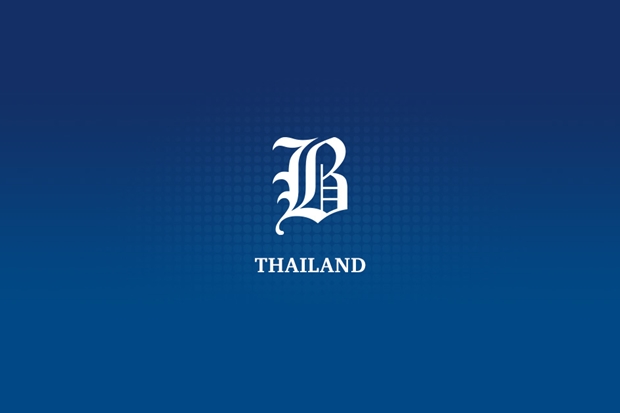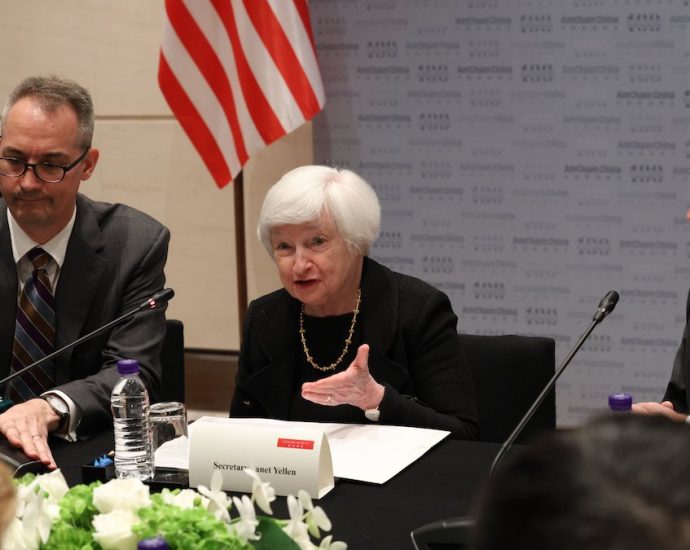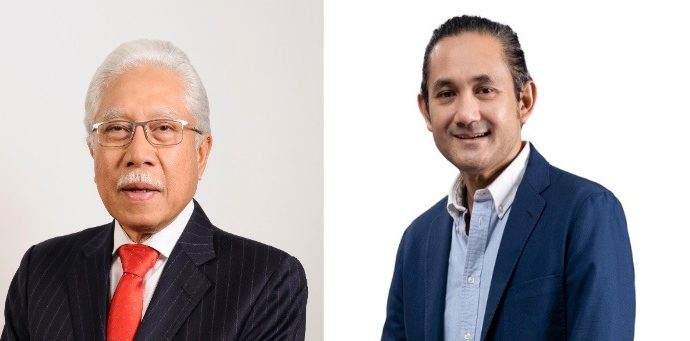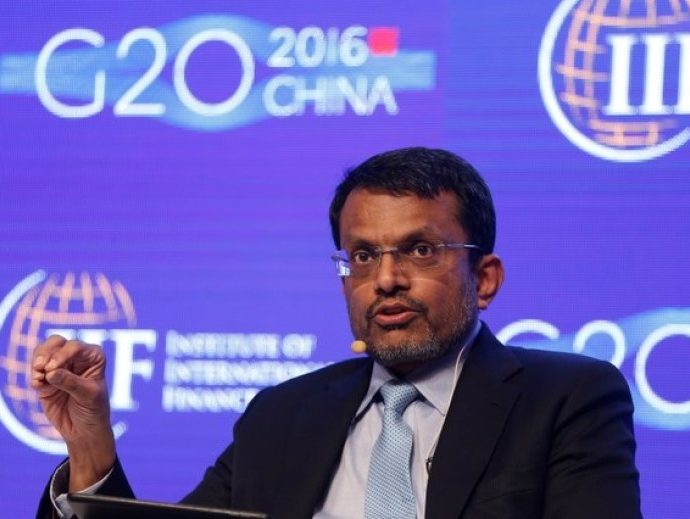Police probe marriage scam claims
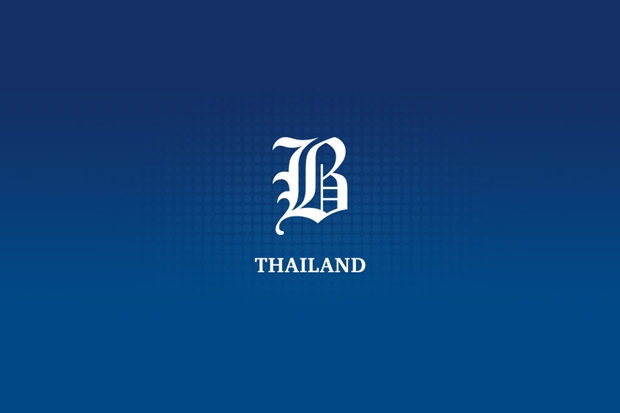
Women ‘tricked into Chinese wedlock’
UDON THANI: Provincial police are looking into whether the case of a woman who allegedly fell for a Chinese marriage scam should be considered as a human trafficking case.
Pol Maj Gen Pitsanu Unhaseree, commander of Udon Thani Provincial Police, on Friday said an officer was assigned to initially investigate claims that a 31-year-old woman, identified as Nuch, and three others were tricked into marrying Chinese men.
They were said to be persuaded by a matchmaker, identified as Da, to marry Chinese men for 100,000-baht dowries with a condition to become pregnant in the first six months.
However, the victims were said to have stayed in China as servants or even their father-in-laws’ second wives after the babies were delivered.
Nuch, who is from the province’s Nong Wua So district, first told the media on Thursday about the marriage scam. She said she and three other Thai women were able to leave China and arrive in Thailand last month due to her mother’s help.
She said she decided to tell her story because she wanted her case to be a lesson for other Thai women. Nuch said she married 32-year-old Chinese national Jin Wei Lian less than three days after their matchmaking before moving to China’s Hubei province.
She said she told the matchmaker before meeting her husband that she was unable to bear children, but the marriage went ahead regardless. She said she was kept in a house and was assaulted by her husband and her mother-in-law for not becoming pregnant.
She said she was assaulted for three years before she decided to flee to Thailand along with three other victims of the scam.
Pol Maj Gen Pitsanu said the case cannot yet be considered a human trafficking case yet as the marriage registration and contract were legally done.
“Investigators are now in the process of gathering more evidence and questioning all the victims and the matchmaker,” he said.
Pol Col Suraphong Charttisut, deputy commander of the Anti-Trafficking in Persons Division, said both parties consented while the contract was made, therefore the case may not be classified as human trafficking.
The matchmaker’s actions may also not be considered human trafficking, he said, adding more details will need to be investigated.
Cordial tone in Yellenâs Beijing visit
China has called on the United States to take concrete actions to create a favorable environment for both sides to achieve mutual benefit.
Beijing hopes US Treasury Secretary Janet Yellen, a dovish American official who began a four-day trip to China on Thursday, will take home to President Joe Biden a message: There will be no winners in trade wars and an economic “decoupling.”
Following China’s unveiling earlier this week of export controls of gallium and germanium, raw materials of semiconductors, Yellen met with Chinese Premier Li Qiang at the Great Hall of the People in Beijing on Friday.
She told Li that the US seeks to have healthy economic competition, instead of a “winner-take-all” fight, with China, to benefit both countries over time. She also said that in certain circumstances the US would need to pursue targeted actions to protect its national security.
Yellen is the second high-ranking US official to visit China after US Secretary of State Antony Blinken met with Chinese President Xi Jinping in Beijing on June 19.
These talks were held against the backdrop of an intensifying chip war in which Japan and the Netherlands will restrict the exports of their chip-making raw materials and equipment to China on July 23 and September 1, respectively.
Media reports said last week that Washington will soon announce its plan to ban Nvidia from shipping its A800 and H800 artificial intelligence chips to China, and also restrict US funds from investing in China’s high-technology sectors later this month. To retaliate, China said Monday that it will require companies to apply for licenses to export gallium and germanium from August 1.
‘Seeing rainbow’
When Yellen arrived in Beijing on Thursday, she tweeted that she was going to “seek a healthy economic competition that benefits American workers and firms and to collaborate on global challenges.”
“We will take action to protect our national security when needed, and this trip presents an opportunity to communicate and avoid miscommunication or misunderstanding,” she said in the tweet.
Chinese officials and state media have so far used a more friendly tone to describe Yellen’s China trip than they did with Blinken’s.
“I am very happy to meet you in Beijing,” Li told Yellen at the beginning of their meeting on Friday. “Not only China and the United States, but also people in the whole world, are paying close attention to your visit to Beijing.”
“Yesterday, the moment you arrived at our airport and left the plane, we saw a rainbow,” he said. “I think it can apply to the US-China relationship too: after experiencing a round of winds and rains, we surely can see a rainbow.”
“I also often say to Chinese entrepreneurs that we always have to go through a difficult time,” he said. “When we say it’s bad this year, it can be worse next year. We must survive.”
He said Chinese enterprises must observe the world economy and look forward and cannot just look at the water under their feet on rainy days. He said this practice can also be applied in Sino-US relations.
Before a meeting with Li, Yellen had a “substantive conversation” with former Chinese Vice Premier Liu He and the outgoing governor of China’s central bank, Yi Gang, AFP reported. They discussed the global economic outlook and the respective economic outlooks for the US and China.

Equal relationship
On Friday, China’s Ministry of Finance said in a statement that Yellen’s visit to China is a concrete measure to implement the important consensus of last November’s Xi-Biden meeting. It said the trip will strengthen communication and exchanges in the financial area between the two countries.
“The essence of Sino-US economic relations is to achieve mutual benefit and win-win results. There will be no winners in trade wars and ‘decoupling’,” said an unnamed spokesperson of the Finance Ministry. “We hope that the US will take concrete actions to create a favorable environment for the healthy development of economic and trade relations between the two countries.”
Su Xiaohui, deputy director of the Department of American Studies at China Institute of International Studies, remarks in a video released on Friday that Yellen’s China trip was decided by both the US and China, was not a result of an invitation from China, meaning that Beijing is not asking the US for help in anything.
Su says the fact that Yellen will stay longer in China than Blinken means that both the US and China want to discuss matters in detail.
She says Beijing is willing to receive American officials as it feels that Washington has been aware that suppressing and containing China will have a negative impact on the US. She says Washington knows clearly that American firms want to see stable Sino-US relations.
“From China’s perspective, Yellen’s trip does not mean that the US can make demands on China, or that it can unilaterally pressure China and force it to compromise,” she says. “Her trip should emphasize that the development of the relationship between the two countries must be equal and mutually beneficial.”
She says Beijing’s statement of “no winners in trade wars” may touch Yellen, who had once questioned the Trump administration’s tariffs placed on Chinese imports. She says the United States’s so-called “de-risking” or “decoupling” from China does not fulfil the spirit of achieving mutual benefit and win-win results.
Diversification
In May, G7 leaders met in Japan and agreed that their members should “de-risk” from China. Beijing said there is no difference between “de-risking” and “de-coupling” as both will lead to the departure of foreign firms from China.
Yellen preferred to describe the United States’s strategy as “diversification.”
She told representatives of some China-based US firms in a Friday meeting that a decoupling of the US and Chinese economies would be “virtually impossible.”
“We seek to diversify, not to decouple. A decoupling of the world’s two largest economies would be destabilising for the global economy,” she said, adding that Washington was not seeking a “wholesale separation of our economies.”
Yellen said the US government is concerned by Beijing’s export controls on metals key to semiconductor manufacturing and is still evaluating the impact of these actions. She said the Chinese curbs reminded the US of the importance of building resilient and diversified supply chains.
“I also discussed concerns about barriers to market access, China’s use of non-market tools, and punitive actions against US firms,” she tweeted.
Luo Fuqiang, a military commentator, says in his latest vlog that he remains unconvinced that Washington will consider China’s interests and stop its suppression against China.
But he says US officials, who visit China, will continue to be received by higher-ranking Chinese officials as Beijing wants them to help send authoritative messages back to the US.
Some commentators say Beijing does not have high expectations for the outcome of Yellen’s trip as the US-China conflicts are related to the US Commerce Department and the Office of the United States Trade Representative, not the Treasury Department.
Read: China squeezes key metal supplies in chip war escalation
Follow Jeff Pao on Twitter at @jeffpao3
War refugees flood camps by border
Mae Hong Son caring for more than 5,000 people as fighting intensifies

More than 5,000 refugees from Myanmar are now taking shelter at refugee camps in Mae Sariang district of Mae Hong Son to escape fighting between the Karenni Army (KA) and Myanmar junta forces.
Reports on Thursday said the KA had been hit by junta airstrikes in a border town opposite the province in northern Thailand. Casualties and deaths were reported.
Many local residents reportedly had to carry injured people across the border to receive medical treatment in Thailand while others had to flee for border forests.
A source from the KA said the Myanmar junta carried out 19 airstrikes, seriously injuring KA soldiers. At least seven Karenni troops were reportedly sent to Mae Hong Son Hospital.
On Friday, residents in Muang district of Mae Hong Son heard gunfire from the other side of the border. It was reported the junta forces were firing shots every seven minutes.
The number of Myanmar refugees fleeing to Mae Hong Son has reached 5,156 over the past few weeks. They are staying in four shelters where humanitarian aid is provided.
Chettha Mosikrat, the Mae Hong Son governor, said the number of refugees had not yet exceeded the capacity to provide temporary help. However, officials must document every arrival as well as initiate disease prevention during the rainy season.
Surachet Puinoi, the Mae Sariang district chief, said 30 refugees at the shelters in Sao Hin and Mae Khong sub-districts had malaria. Others have developed respiratory, gastrointestinal, muscle and bone diseases.
Mr Surachet said Thai officials have sprayed mosquito repellent in the shelters every week to prevent malaria.
The Mae Sariang district public health office has provided medical officers and ambulances in the event of an emergency.
There are also two field hospitals available, he said.
India’s federal police arrest three railway employees over deadly train crash: Source
MUMBAI: India’s federal police arrested three railway employees on Friday (Jul 7) in connection with a deadly train crash last month that killed 292 people, a person with direct knowledge of the matter said. The arrests were made under Indian penal code sections related to culpable homicide, the source added,Continue Reading
TM announces upcoming changes in Group CEO and Chairman from Aug
Imri Mokhtar completes term, succeeded by Amar Huzaimi as Group CEO
Azlan Hashim finishes term, succeeded by Zainal Abidin Putih as Chairman
Telekom Malaysia Bhd (TM), has announced key changes in its leadership effective 1 Aug 2023. The change sees Amar Huzaimi Md Deris as the new Managing Director/Group CEO of TM, succeeding…Continue Reading
Phuket aims to become âsafest cityâ
Deputy governor and industry reps discuss ways to improve services and safety

PHUKET: An effort is under way to make Phuket the safest city in Southeast Asia following a number of incidents involving tourists.
Danai Sunantarod, deputy governor of the southern tourist province, expressed the aim at a meeting on Friday with representatives of tour and travel agencies.
Their discussion of security on the island highlighted several recent incidents that have been a cause for concern.
In May, a speedboat crashed into a channel marker in Chalong Bay, injuring 35 people, mostly Russian tourists. The boat driver was believed to have dozed off.
In February, Mr Danai said, a Chinese tourist was wounded in a knife attack by a travel agent after a disagreement over a refund for a day trip that the visitor missed. Tourists drowning in Phuket also raise questions about safety, he said.
“We have to learn from these incidents,” Mr Danai said. “We want to make our home safe for our visitors. We want to be the safest city in the region.”
He said the private and public sectors must cooperate to ensure the safety of tourists, while police officers must enforce the law.
“We will tighten safety measures because we don’t want to have scammers in Phuket,” he said, referring to the case involving the Chinese tourist.
“We also want tour operators to eliminate the dual pricing system because it makes our guests feel bad,” he said, referring to a system in which foreign visitors, including expatriates, are charged more than Thais for services. (Attractions that engage in the practice are listed on 2pricethailand.com)
Mr Danai said Phuket had become a famous destination due to its beautiful beaches, variety of food, unique culture and good hospitality. The province has received local and international recognition, including a Unesco Creative City of Gastronomy listing in 2015.
Phuket welcomed 5.6 million tourists last year, who brought in about 200 billion baht for the resort island, he said. About 60-70% of them were foreigners. More tourists will come this year to reach the province’s target of 10 million, he said.
Ratchadaporn Oin, head of the Tourism and Sports Ministry office in Phuket, said tour guides and operators have an important role to play in keeping tourists safe. They must know the rules so customers will know what can and cannot be done, she said.
For example, Ms Ratchadaporn said, guides must inform tourists not to touch marine life for pictures or feed fish while snorkelling or diving.
“We urge you to take good care of tourists to make them feel safe,” she said. “It will help boost the good image of the island.”
‘Anyone would let their guard down’: 62-year-old man loses more than S$40,000 in CPF savings to malware scam

After communicating back and forth on WhatsApp, Mr Ang told the scammer he wanted to give up buying the seafood and go to sleep as it was about 11pm.
“He said ‘No problem, the S$5 is in, I’ll definitely send you the goods. You can just pay for the seafood when it arrives,’” Mr Ang continued.
MULTIPLE TRANSFERS THROUGHOUT THE NIGHT
“After that, I thought I was very clever. I went into my phone settings to try and restrict the permissions for the app that was downloaded into my phone, and I thought everything would be fine.”
He also tried deleting the app, but did not succeed.
When he woke up at about 6am the next morning, he discovered multiple messages from DBS, indicating that a bunch of transfers had been made from his account throughout the night.
Each transfer was not more than S$5,000, and there were more than 10 transactions made via PayNow between 1.30am to 4.30am.
“I quickly called the bank to check if it’s true that a lot of money was transferred out of my account. I asked if there was still money in my account, and they said I still had about S$10,000 inside,” Mr Ang said in Mandarin.
“So I thought, actually I have around that amount in my account. So something was not quite right, since it didn’t seem like there was any money that got transferred out.”
He asked the bank to block his bank account, and they suggested he make a police report. He went to Bedok Police Station to do so on Jun 1.
The investigation officer later called him to ask for a more detailed statement from his bank and that was when Mr Ang found out that the scammer had transferred more than S$40,000 from his CPF account to his bank account, and then transferred it out.
“At that moment, I was very heartbroken. Why did the money just disappear without reason?” he added.
Unlike in other scams, the scammer did not ask for any passwords or essential login information, which is part of why Mr Ang did not think anything was amiss.
He also did not realise that the money had been transferred out from his CPF account because he could only see the notification about the transfer in the CPF app and his email.
“But if you don’t take note of this, I can’t be checking my CPF account or email every second of the day. I don’t think I go into my CPF app more than once a year.”
He also made the mistake of writing down his passwords and other login details in a note-taking app on his phone, he shared.
“Maybe that’s how they found my details,” he added, stressing that others should learn from his mistake.
“We all have a lot of passwords these days. If you use an easy password, you’re scared they’ll be able to guess it. But if you use a lot of passwords, you really can’t remember them all and have to check every time you use it,” he said with a chuckle.
Reflecting on his experience, Mr Ang cautioned older people: “What we learned last time can’t beat the scammers of today. They’ve developed a lot.
“The best defence is not touching these online things at all. You can look at it, but don’t get sucked in. We often think about other scams in the media, and after you hear about it a lot, you feel numb to it. But when you meet it, the way each scammer operates is different, so you might fall for it.”
ONLINE USERS CAN BE BETTER PROTECTED
He also hopes that social media platforms like Facebook and Instagram, as well as banks, can come up with more safety measures to deter scammers.
“On the bank’s side, the settings are very easy to change. I’ve tried it before. Once I decide to transfer the money, the money goes out,” he added.
“After the money goes out, the bank notifies you about the transfer. But at that point, the money has been transferred, so you can’t get it back. I hope the bank can consider this when putting safety measures in place.”
While additional confirmation or verification measures may be more troublesome, it could be safer for users, he added.
‘Anyone would let their guard down’: 62-year-old man loses over S$40,000 in CPF savings to malware scam

After communicating back and forth on WhatsApp, Mr Ang told the scammer he wanted to give up buying the seafood and go to sleep as it was about 11pm.
“He said ‘No problem, the S$5 is in, I’ll definitely send you the goods. You can just pay for the seafood when it arrives,’” Mr Ang continued.
MULTIPLE TRANSFERS THROUGHOUT THE NIGHT
“After that, I thought I was very clever. I went into my phone settings to try and restrict the permissions for the app that was downloaded into my phone, and I thought everything would be fine.”
He also tried deleting the app, but did not succeed.
When he woke up at about 6am the next morning, he discovered multiple messages from DBS, indicating that a bunch of transfers had been made from his account throughout the night.
Each transfer was not more than S$5,000, and there were more than 10 transactions made via PayNow between 1.30am and 4.30am.
“I quickly called the bank to check if it’s true that a lot of money was transferred out of my account. I asked if there was still money in my account, and they said I still had about S$10,000 inside,” Mr Ang said in Mandarin.
“So I thought, actually I have around that amount in my account. So something was not quite right, since it didn’t seem like there was any money that got transferred out.”
He asked the bank to block his bank account, and they suggested he make a police report. He went to Bedok Police Station to do so on Jun 1.
The investigation officer later called him to ask for a more detailed statement from his bank and that was when Mr Ang found out that the scammer had transferred more than S$40,000 from his CPF account to his bank account, and then transferred it out.
“At that moment, I was very heartbroken. Why did the money just disappear without reason?” he added.
Unlike in other scams, the scammer did not ask for any passwords or essential login information, which is part of why Mr Ang did not think anything was amiss.
He also did not realise that the money had been transferred out from his CPF account because he could only see the notification about the transfer in the CPF app and his email.
“But if you don’t take note of this, I can’t be checking my CPF account or email every second of the day. I don’t think I go into my CPF app more than once a year.”
He also made the mistake of writing down his passwords and other login details in a note-taking app on his phone, he shared.
“Maybe that’s how they found my details,” he added, stressing that others should learn from his mistake.
“We all have a lot of passwords these days. If you use an easy password, you’re scared they’ll be able to guess it. But if you use a lot of passwords, you really can’t remember them all and have to check every time you use it,” he said with a chuckle.
Reflecting on his experience, Mr Ang cautioned older people: “What we learned last time can’t beat the scammers of today. They’ve developed a lot.
“The best defence is not touching these online things at all. You can look at it, but don’t get sucked in. We often think about other scams in the media, and after you hear about it a lot, you feel numb to it. But when you meet it, the way each scammer operates is different, so you might fall for it.”
ONLINE USERS CAN BE BETTER PROTECTED
He also hopes that social media platforms like Facebook and Instagram, as well as banks, can come up with more safety measures to deter scammers.
“On the bank’s side, the settings are very easy to change. I’ve tried it before. Once I decide to transfer the money, the money goes out,” he added.
“After the money goes out, the bank notifies you about the transfer. But at that point, the money has been transferred, so you can’t get it back. I hope the bank can consider this when putting safety measures in place.”
While additional confirmation or verification measures may be more troublesome, it could be safer for users, he added.
Metaâs Threads in Twitterâs crosshairs
The launch of social media app Threads as a competitor to Twitter is a game-changer.
Meta, which also owns Facebook and Instagram, launched the new platform yesterday, ahead of schedule. Threads was welcomed almost immediately – especially by hordes of Twitter users that have watched in dismay as their beloved platform crumbles in the hands of Elon Musk.
In less than 24 hours, Threads attracted some 30 million users. And with Meta already having more than two billion Instagram users who can directly link their accounts to it, Threads’ user base will grow fast.

With its simple black and white feed, and features that let you reply, love, quote and comment on other people’s “threads”, the similarities between Threads and Twitter are obvious.
The question now is: will Threads be the one that finally unseats Twitter?
We’ve been here before
In October of last year, Twitter users looked on helplessly as Elon Musk became CEO. Mastodon was the first “escape plan.” But many found its decentralized servers difficult and confusing to use, with each one having very different content rules and communities.
Many Twitter fans created “back up” Mastodon accounts in case Twitter crashed, and waited to see what Musk would do next. The wait wasn’t long. Platform instability and outages became common as Musk started laying off Twitter staff (he has now fired about 80% of Twitter’s original workforce).
Shortly after, Musk horrified users and made headlines by upending Twitter’s verification system and forcing “blue tick” holders to pay for the privilege of authentication. This opened the door for account impersonations and the sharing of misinformation at scale. Some large corporate brands left the platform, taking their advertising dollars with them.
Musk also labeled trusted news organizations such as the BBC as “state-owned” media, until public backlash forced him to retreat. More recently, he started limiting how many tweets users can view and announced that TweetDeck (a management tool for scheduling tweets) would be limited to paid accounts.
Twitter users have tried several alternatives, including Spoutible and Post. Bluesky, which came from Twitter co-founder Jack Dorsey, is gaining ground – but its growth has been limited due to its invitation-only registration process.
Nothing had quite captured the imagination of Twitter followers … until now.

Community is the key to success
Before Musk’s reign, Twitter enjoyed many years of success. It had long been a home for journalists, governments, academics and the public to share information on the key issues of the day. In emergencies, Twitter offered real-time support. During some of the worst disasters, users have shared information and made life-saving decisions.
While not without flaws – such as trolls, bots and online abuse – Twitter’s verification process and the ability to block and report inappropriate content was central to its success in building a thriving community.
This is also what sets Threads apart from competitors. By linking Threads to Instagram, Meta has given itself a significant head-start towards reaching the critical mass of users needed to establish itself as a leading platform (a privilege Mastodon didn’t enjoy).
Not only can Threads users retain their usernames, they can also bring their Instagram followers with them. The ability to retain community in an app that provides a similar experience to Twitter is what makes Threads the biggest threat yet.
My research shows that people crave authority, authenticity and community the most when they engage with online information. In our new book, my co-authors Donald O Case, Rebekah Willson and I explain how users search for information from sources they know and trust.
Twitter fans want an alternative platform with similar functionality, but most importantly they want to quickly find “their people.” They don’t want to have to rebuild their communities. This is likely why so many have stayed on Twitter, even as Musk has done so well to run it into the ground.
Challenges ahead
Of course, Twitter users may also be concerned about jumping from the frying pan into the fire. Signing up to yet another Meta app comes with its own concerns.
New Threads users who read the fine print will note that their information will be used to “personalize ads and other experiences” across both platforms. And users have pointed out you can only delete your Threads account if you delete your Instagram account.
This kind of entrenchment could be off-putting for some.
Moreover, Meta decided to not launch Threads anywhere in the European Union yesterday due to regulatory concerns. The EU’s new Digital Markets Act could raise challenges for Threads.

For example, the act sets out businesses can’t “track end users outside of [their] core platform service for the purpose of targeted advertising, without effective consent having been granted.” This may be in conflict with Threads’ privacy policy.
Meta has also announced plans to eventually move Threads towards a decentralized infrastructure.
In the app’s “How Threads Works” details, it says “future versions of Threads will work with the fediverse”, enabling “people to follow and interact with each other on different platforms, including Mastodon.”
This means people will be able to view and interact with Threads content from non-Meta accounts, without needing to sign up to Threads. Using the ActivityPub standard (which enables decentralized interoperability between platforms), Threads could then function the same way as WordPress, Mastodon and email servers – wherein users of one server can interact with others.
When and how Threads achieves this plan for decentralized engagement – and how this might impact users’ experience – is unclear.
Did Meta steal ‘trade secrets’?
As for Musk, he’s not going down without a fight. Just hours after Threads’ release, Twitter’s lawyer Alex Spiro released a letter accusing Meta of “systematic” and “unlawful misappropriation” of trade secrets.
The letter alleges former Twitter employees hired by Meta were “deliberately assigned” to “develop, in a matter of months, Meta’s copycat ‘Threads’ app.” Meta has disputed these claims, according to reports, but the rivalry between the two companies seems far from over.
Lisa M Given is Professor of Information Sciences & Director, Social Change Enabling Impact Platform, RMIT University
This article is republished from The Conversation under a Creative Commons license. Read the original article.
Singapore winning on inflation, losing on growth
SINGAPORE – Singapore’s central bank this week delivered a sobering economic assessment amid sluggish near-term growth prospects, ongoing inflationary challenges and predictions the economy is already in a technical recession.
The Monetary Authority of Singapore (MAS) also emphasized that despite revising its 2023 headline inflation forecast downward, its battle against rising consumer prices is far from won.
The city-state’s trade-reliant economy faces mounting headwinds as external demand weakens amid a global economic slowdown.
Earlier this year, there were certain hopes that a post-pandemic economic rebound in China would lift Singapore above its tepid current growth forecast of between 0.5% to 2.5%.
Those hopes have since faltered as China’s economic recovery loses steam, with fewer and fewer independent economists predicting Beijing will hit its 5% economic growth target for 2023.
Singapore’s economy contracted in the first quarter, falling to -0.4% from the previous quarter’s growth of just 0.1%.
Economists believe that sluggish trade and industrial performance, driven partly by China’s faltering recovery, likely dragged Singapore into a technical recession in the second quarter, preliminary estimates for which are due later this month.
“The boost from China’s reopening has been limited and fallen short of expectations. It’s far from clear whether any boost is on the horizon, as China’s economic recovery is losing momentum,” said senior economists Chua Hak Bin and Brian Lee Shun Rong of Maybank Investment Banking Group in a research note reviewed by Asia Times.
In an annual review published on July 5, the MAS said that Singapore’s growth outlook will remain weak in the near term, with key growth engines such as manufacturing and financial services expected to “remain in the doldrums” as the global economy is expected to slow in the second half of 2023.
In comments accompanying the review’s release, MAS managing director Ravi Menon stated that growth in domestic-facing sectors is also expected to taper off as consumer demand slows due to higher interest rates and moderate wage increases.
Menon said Singapore’s 2023 gross domestic product (GDP) is set to slow “below-trend” within the official forecast range of 0.5% to 2.5%, down significantly from 3.6% in 2022. Inflation, while still above the historical average, has “clearly peaked and discernibly moderated” from recent 14-year highs, said Menon.

Imported inflation, he noted, has turned negative, reflecting the decline in global energy and food prices and the effects of a stronger Singapore dollar, which has risen in line with MAS’ aggressive monetary policy.
The MAS uses exchange rates, managed against a trade-weighted undisclosed basket of currencies from Singapore’s major trading partners, instead of interest rates as its primary policy tool to manage imported inflation.
It has enacted five rounds of monetary tightening since October 2021, causing the national dollar to appreciate by 8.3% and helping to curb imported cost pressures.
Core inflation, the central bank’s favored price measure which excludes private transport and accommodation, fell on a month-on-month seasonally adjusted annualized basis to 3.6% in May this year from a peak of 9.1% in June 2022, according to MAS data.
Headline inflation slowed year-on-year to 5.1% in May, down from 5.7% in April.
“Our progressive tightening of monetary policy has helped to arrest the momentum of price increases and facilitated a gradual decline in inflation,” said Menon.
“But the fight against inflation is not over and the monetary policy stance remains tight relative to the business cycle,” he added, noting that MAS has no intention of pivoting from “inflation-fighting mode” to “growth-supporting mode.”
With a more “benign” outlook for consumer prices, the central bank has lowered its headline, or all-items, inflation forecast for 2023 to a range of 4.5% to 5.5% from a previous estimate of 5.5% to 6.5%.
The full-year core inflation forecast remains unchanged at 3.5% to 4.5%, but is expected to moderate closer to 2.5% to 3.0% by the end of the year.
After refraining from a sixth round of policy tightening during a policy review in April, defying the forecasts of many economists, Menon said the MAS is “closely monitoring the evolving growth-inflation dynamics and [remaining] vigilant to risks on either side. We stand ready to adjust monetary policy as needed, especially if inflation momentum were to re-accelerate.”
Song Seng Wun, an independent economist formerly with CIMB Private Banking, told Asia Times that while energy and commodity prices have stabilized off their peaks “consumption on the services side is where inflationary pressure remains.”
“Despite the higher prices, people are still willing to pay because they’re gainfully employed and they still are quite confident about job security,” Song said.
Singapore’s labor market remains tight despite a recent uptick in retrenchments, with the overall unemployment rate standing at 1.8% in April, its lowest level since early 2015.
But with the rising likelihood that Singapore entered a technical recession in the second quarter, observers are split on whether falling export demand and declining industrial production will lead to a new round of layoffs.
The city-state’s non-oil domestic exports, seen as a barometer for external demand, contracted for an eighth consecutive month in May, dropping by 14.7%.
Exports of both electronics such as semiconductors and disk media products and non-electronics like specialized machinery, petrochemicals and pharmaceuticals registered steep declines.

Similarly, Singapore’s manufacturing output contracted for an eighth straight month in May, falling 10.8% year-on-year in the first double-digit contraction recorded since November 2019.
“We are likely to get another quarter of contraction. A technical recession remains highly likely,” said Song. “The drag from manufacturing and related industries will probably offset the service sector recovery. Despite that, labor market conditions here remain supportive and so consumer confidence remains quite resilient, although some businesses have trimmed.”
Maybank’s Chua and Lee expect the manufacturing downturn to persist in coming months amid weak external demand, which they note is “broad-based, although most evident in the prolonged global electronics slump.”
They predict Singapore’s second quarter GDP contracted by 0.8%, marking the first technical recession in the city-state since the two-month Covid-19 lockdown in 2020, which halted nearly all economic activity.
Follow Nile Bowie on Twitter at @NileBowie

